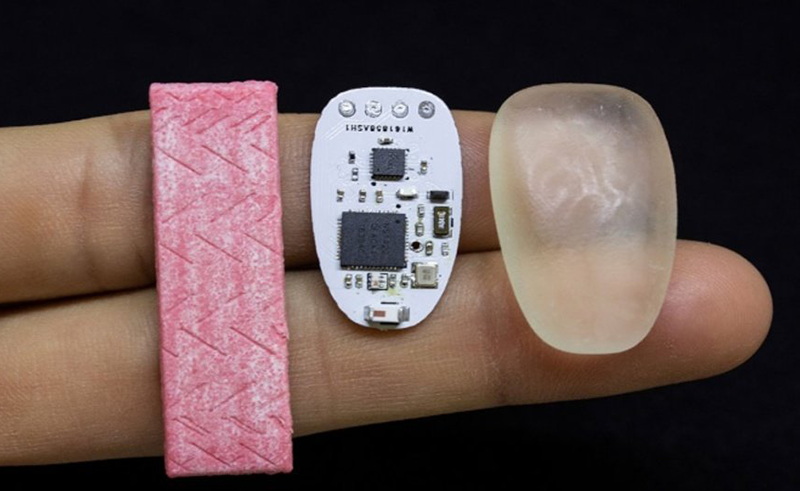What do you do when both your hands are busy and you need to answer the phone? Well, with a new technology from Australia, you simply bite down on a tiny piece of tech in your mouth. Dubbed ChewIt, it’s a novel interface developed by the Augmented Human Lab team at the Auckland Bioengineering Institute (ABI), University of Auckland. And, rather than calling it a wearable tech, critics are describing it as a chewable technology.
Read more Scientists Create New Stretchable, Wearable Sensor from Chewing Gum
ChewIt, developed by Pablo Gallego (ME student) under the supervision of Dr. Denys Matthies and Associate Professor Suranga Nanayakkara in the Auckland Bioengineering Institute’s Augmented Human Lab, is a tiny device no bigger than a piece of chewing gum. Encased in a flexible, custom-made printed circuit board, it essentially sits on your tongue and allows you to have ‘discreet’ hands-free interaction with technologies like your phone, computer and smartwatch.
Since moving from Singapore to New Zealand last year, Nanayakkara and his team have produced a number of innovative technologies. Along with ChewIt they have also developed GymSoles, a pressure sensitive insole that vibrates, giving users vibrotactile feedback to help them maintain the correct body posture, reports NZ Herald.
The team has also created FingerReader, a prototype finger device that allows wearers to point at written words, for example, words on the spine of a book, or words in a restaurant menu. The FingerReader then translates those written words into voice.
“We want to design and develop systems that can understand the user rather than us having to tell the technology what to do every time – technologies that can understand us much better than technology currently does,” says Nanayakkara, who defines such technologies as “assistive augmentation”.
Read more This Tiny Tooth Sensor Could Track Your Diet and Health
“It’s when the system understands the abilities, behavior and emotions of the user. And when the system is unobtrusive and integrated with our body or our behavior. And it should be about strengthening and extending the physical and sensorial abilities of the user, allowing them to do













